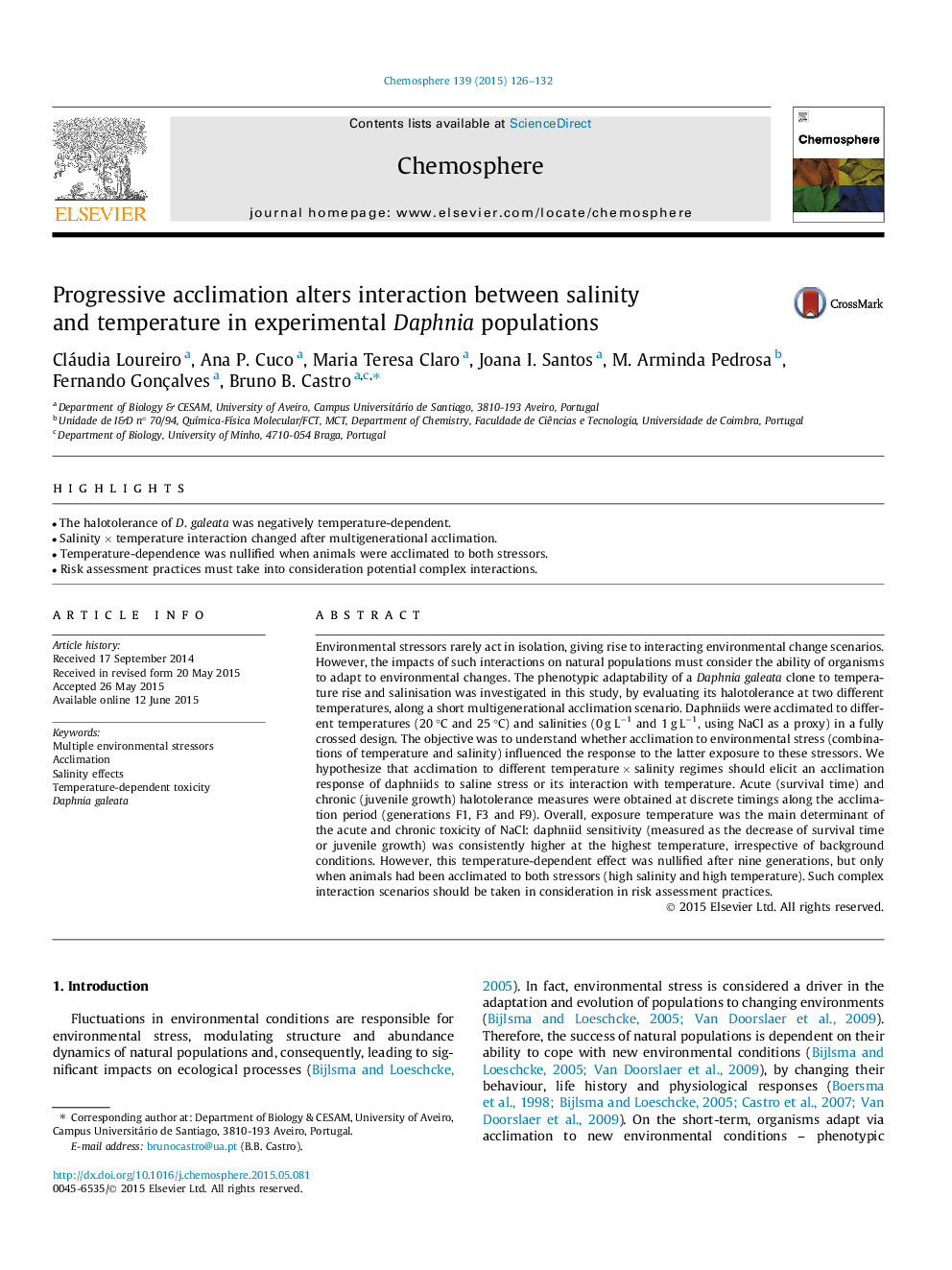| کد مقاله | کد نشریه | سال انتشار | مقاله انگلیسی | نسخه تمام متن |
|---|---|---|---|---|
| 4408137 | 1618832 | 2015 | 7 صفحه PDF | دانلود رایگان |
• The halotolerance of D. galeata was negatively temperature-dependent.
• Salinity × temperature interaction changed after multigenerational acclimation.
• Temperature-dependence was nullified when animals were acclimated to both stressors.
• Risk assessment practices must take into consideration potential complex interactions.
Environmental stressors rarely act in isolation, giving rise to interacting environmental change scenarios. However, the impacts of such interactions on natural populations must consider the ability of organisms to adapt to environmental changes. The phenotypic adaptability of a Daphnia galeata clone to temperature rise and salinisation was investigated in this study, by evaluating its halotolerance at two different temperatures, along a short multigenerational acclimation scenario. Daphniids were acclimated to different temperatures (20 °C and 25 °C) and salinities (0 g L−1 and 1 g L−1, using NaCl as a proxy) in a fully crossed design. The objective was to understand whether acclimation to environmental stress (combinations of temperature and salinity) influenced the response to the latter exposure to these stressors. We hypothesize that acclimation to different temperature × salinity regimes should elicit an acclimation response of daphniids to saline stress or its interaction with temperature. Acute (survival time) and chronic (juvenile growth) halotolerance measures were obtained at discrete timings along the acclimation period (generations F1, F3 and F9). Overall, exposure temperature was the main determinant of the acute and chronic toxicity of NaCl: daphniid sensitivity (measured as the decrease of survival time or juvenile growth) was consistently higher at the highest temperature, irrespective of background conditions. However, this temperature-dependent effect was nullified after nine generations, but only when animals had been acclimated to both stressors (high salinity and high temperature). Such complex interaction scenarios should be taken in consideration in risk assessment practices.
Journal: Chemosphere - Volume 139, November 2015, Pages 126–132
